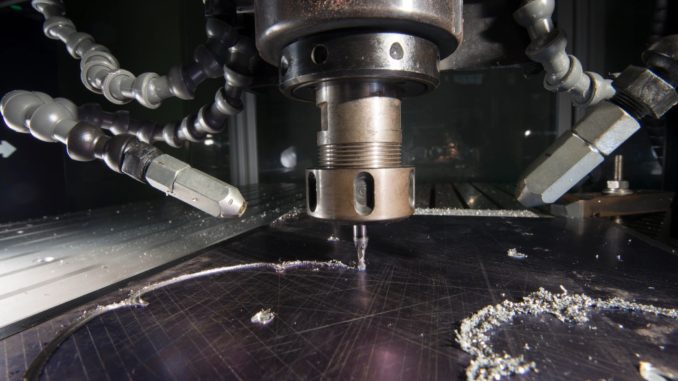
There’s little doubt that robotics and artificial intelligence technology is becoming more and more mainstream by the day. It’s disrupting the manufacturing sector as companies continue replacing human workers with robots that can automate the production process. Hospitals are beginning to use robots to perform delicate procedures. This hotel in Japan even uses robot receptionists dressed up as dinosaurs!
One study forecasts that spending on robotics will grow at 17% annually and hit $135 billion in 2019. It’s easy to see why spending is rising at such a rapid clip. Robots are cost-efficient. They don’t require salaries, healthcare benefits or 401(k) matching. They also provide a degree of precision that may be difficult to accomplish using the human hand. The robotics industry as a whole may still be in its infancy, but applications across of multitude of industries suggest that the robotics boom is just beginning.
If robotics is about to become such a major part of our daily lives, should investors be reallocating their portfolios appropriately? Like tech, healthcare, utilities and consumer staples, should robotics now be considered as a core portfolio position?
This article does a nice job of running down some of the top individual stock plays in the robotics space, but investors may be better off just buying the entire sector instead of trying to pick individual winners. That would lead investors to ETFs where there aren’t a lot of options.
The Robo-Stox Global Robotics and Automation Index ETF (ROBO) is the larger of the two robotics-focused funds. The portfolio holds nearly 100 names and targets companies heavily involved in robotics technology and artificial intelligence. While it’s fairly diversified, the fund is fairly risky. It has nearly 40% of its assets in small- and micro-cap names, while more than half of the fund is invested in companies headquartered outside of North America. Top holdings include iRobot (IRBT), Intuitive Surgical (ISRG) and Japan-based companies Keyence and Daifuku.
The Global X Robotics and Artificial Intelligence ETF (BOTZ) is smaller and more concentrated. The portfolio holds just 30 names with two-thirds of the fund dedicated to the top ten. It targets companies heavily involved in robotics, industrial automation and autonomous vehicles. This fund has half of its assets invested in the Asia Pacific region where much of the sector growth is being developed. Just one-fourth is invested in U.S.-based businesses. In addition to Keyence and Intuitive Surgical, BOTZ counts SMC Corp, Mitsubishi Electric and Yaskawa Electric in its top ten.
While these funds give investors an opportunity to invest directly in the robotics sector, they both come at a cost. ROBO has an expense ratio of 0.95%, while BOTZ has an only modestly better ratio of 0.68%. There’s an added cost for investing in foreign and emerging markets so a higher expense ratio would be expected. For ROBO, a fund that only reconstitutes itself every quarter, an expense ratio of nearly 100 basis points seems excessive. For BOTZ, a fund with relatively few holdings that rebalances just once a year, its expense ratio seems high as well.
Robotics has been a popular theme thus far in 2017. ROBO is up 21% on the year with BOTZ up over 25%. Both funds trade at a forward P/E multiple in the low 20s. That’s higher than the broader market but not excessive given the high growth nature of the industry.
Investors considering one of these two ETFs need to weigh the cost vs. benefit. If the funds continue performing the way they have been over their brief histories, investors likely won’t balk at the expense ratios. But those expense ratios do put them at a disadvantage when compared to the broad market. In normal circumstances, I’d recommend an alternative ETF with a lower expense ratio that duplicates as many of the holdings as possible, but in the case of robotics there just isn’t a good alternative. To answer the broader question, yes, I believe the robotics sector does belong in most portfolios in some shape or form at this point. These ETFs are good for providing exposure to this fast-growing area of the market but they’re not quite ideal funds just yet.
As far as strategy is concerned, I’d wait for a pullback in these shares before initiating a position. These funds have enjoyed a largely uninterrupted rise over much of the past year and could be due for a breather before resuming its climb.
If you enjoyed reading this article, please be sure to share it below and subscribe to the site so that you don't miss any updates or new stuff! As always, thank you for taking the time to read!

